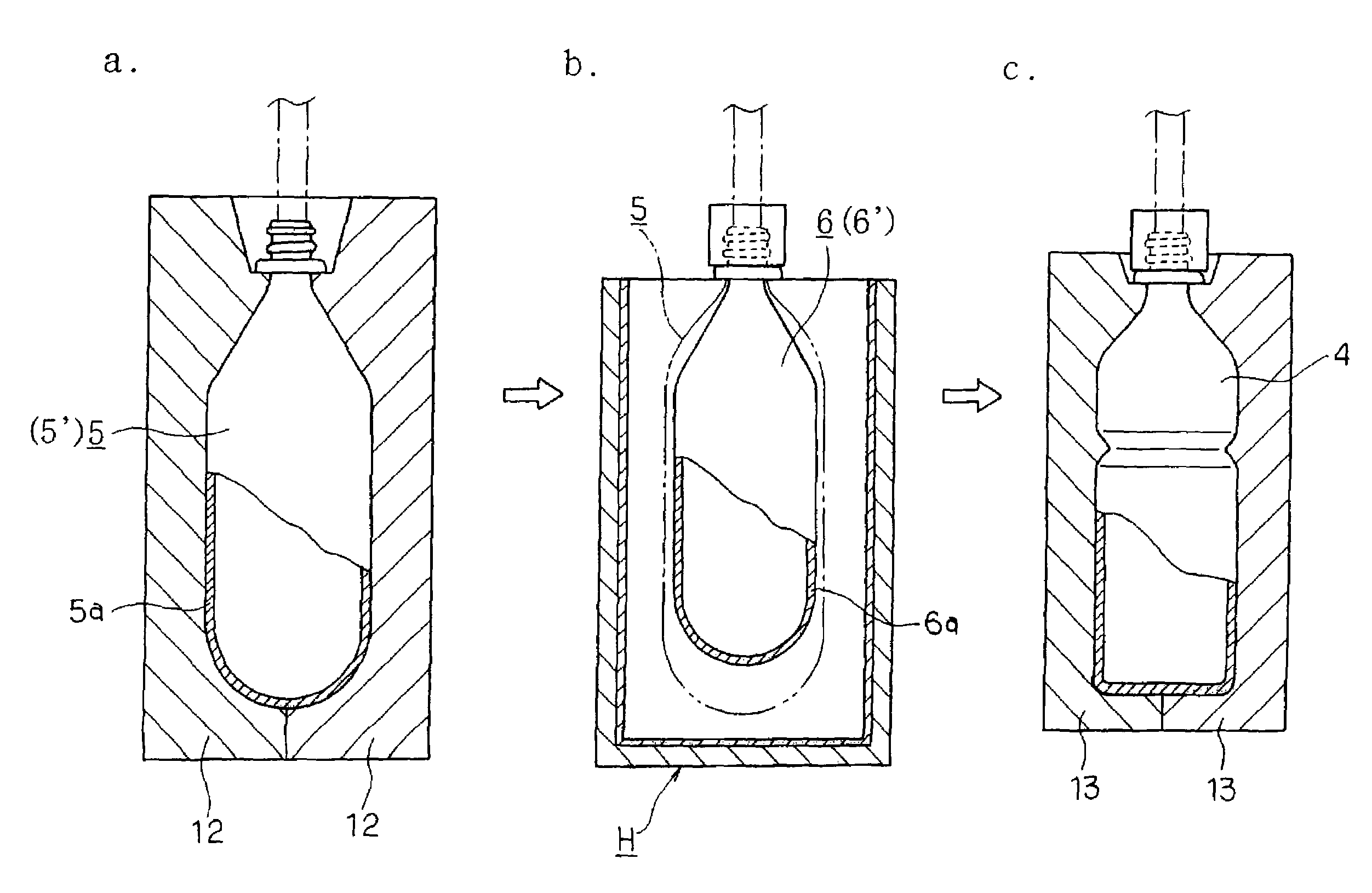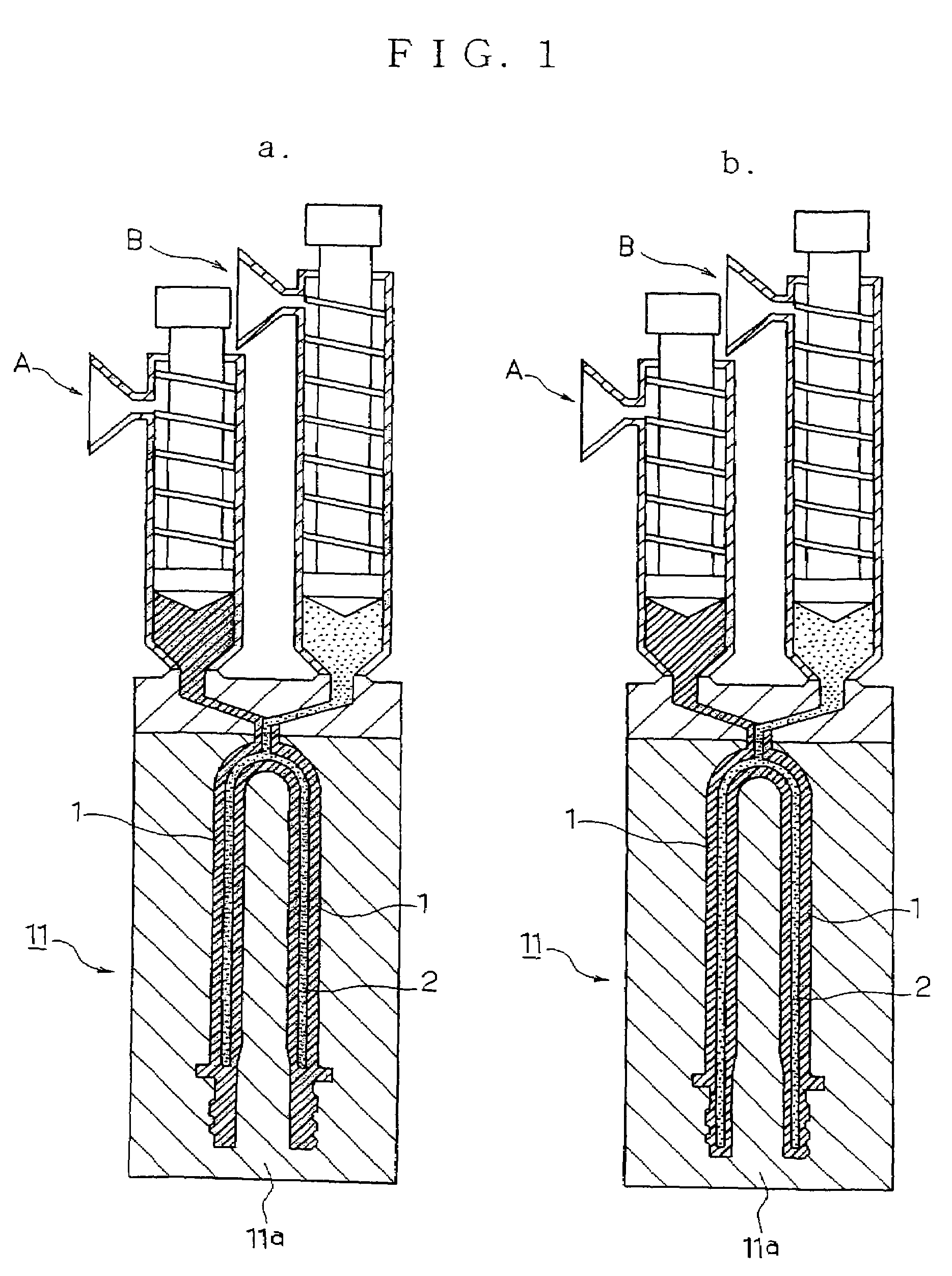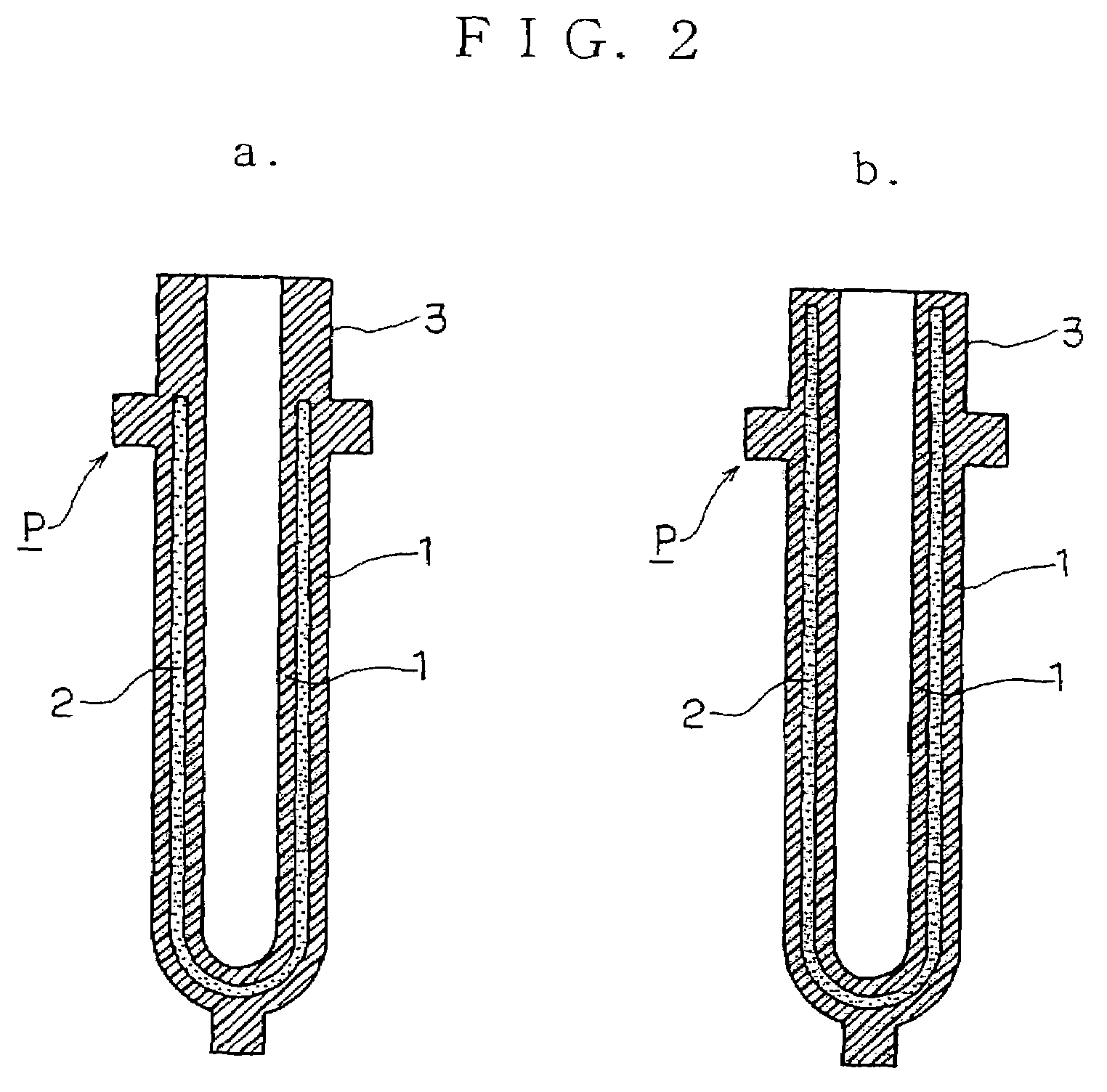Laminated polyester resin container and method of molding such a container
- Summary
- Abstract
- Description
- Claims
- Application Information
AI Technical Summary
Benefits of technology
Problems solved by technology
Method used
Image
Examples
example 1
[0038]When the biaxially oriented blow molding method of this invention was used to mold a multilayer container, the first injection-molding machine A was fed with the PET resin to form the innermost layer and the outer layer, and the second injection-molding machine B was fed with the MXD-6 nylon resin to form the middle gas barrier layer, as shown in FIGS. 1a and 1b. After each resin was molten and kneaded, the molten PET resin was injected from the first injection-molding machine A into the injection mold 11. Then, with a slight time lag, the MXD-6 nylon resin was injected only in a given amount from the second injection-molding machine B. When the injection of MXD-6 nylon resin from the second machine B was stopped halfway, the preform P thus formed was composed of the inner and outer layers 1, 1 of PET resin, plus a middle layer 2 of MXD-6 nylon. The preform P of a 3-layer structure had a predetermined shape that corresponded to the shape of the finished molded product, as show...
example 2
[0047]When such a 5-layer preform as used in the above inventions is utilized in this invention to mold a laminated container in a manner similar to Example 1, it is necessary to operate jointly both of the first injection molding machine A for injecting the PET resin such as used in Example 1 and the second injection molding machine B for injecting the gas barrier layers. The 5-layer preform is prepared by performing the injection molding in the manner described in the next paragraph.
[0048]First of all, the molten PET resin in the first injection-molding machine A was injected into the injection mold, and soon the injecting operation was tentatively stopped. Then, the MXD-6 nylon resin was immediately injected from the second injection-molding machine B, and soon the injecting operation was stopped. The PET resin was again injected from the first injection-molding machine A, and the mold was cooled while the pressure was maintained. A 5-layer preform P′ of a given shape was thus ob...
example 3
[0057]A preform P′ was molded in a similar manner as in Example 2, except that MXD-6 nylon resin layers 9a and 9b were given a somewhat lower thickness than in the 5-layer preform of Example 2 shown in FIG. 5.
[0058]Following the same method as in Example 2, the preform mouth / neck portion 3′, which was to become the mouth of a container, such as a bottle, was treated for whitening to crystallize this portion without causing no thermal deformation. After the preform body portion to be biaxially blown was heated to a blow moldable temperature, which was close to the temperature of thermal crystallization, the preform was set in the primary blow mold, where the trunk portion had been heated to 160 deg C., and the bottom, to 23 deg C. The biaxially oriented blow molding was conducted at a pressure of 26 kg / cm2 for 2.63 sec to give the primary molded intermediate.
[0059]It was found that a favorable primary intermediate of a given shape could be obtained by the primary blow molding conduct...
PUM
| Property | Measurement | Unit |
|---|---|---|
| Temperature | aaaaa | aaaaa |
| Temperature | aaaaa | aaaaa |
| Temperature | aaaaa | aaaaa |
Abstract
Description
Claims
Application Information
 Login to View More
Login to View More - R&D
- Intellectual Property
- Life Sciences
- Materials
- Tech Scout
- Unparalleled Data Quality
- Higher Quality Content
- 60% Fewer Hallucinations
Browse by: Latest US Patents, China's latest patents, Technical Efficacy Thesaurus, Application Domain, Technology Topic, Popular Technical Reports.
© 2025 PatSnap. All rights reserved.Legal|Privacy policy|Modern Slavery Act Transparency Statement|Sitemap|About US| Contact US: help@patsnap.com



